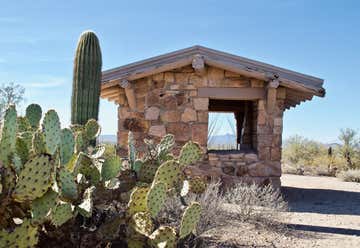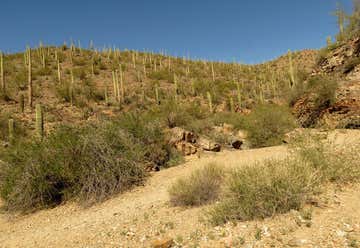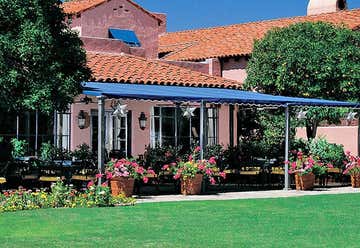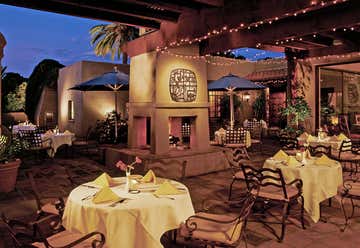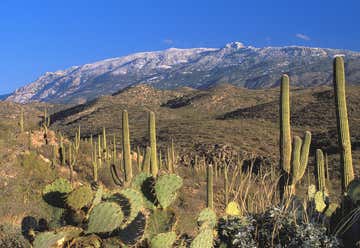It's easy to forget that the arid Southwest is actually teeming with life. Case in point: Saguaro National Park. There's no place where it's more obvious that life can thrive and be beautiful, even in the harshest of conditions. Whether you're hiking or just driving through (gotta love the AC, especially in the middle of summer when it's not advisable to take an extended hike in the extreme heat) you'll definitely gain a new appreciation for this mysterious, arid wilderness of Arizona.
Some tips for visiting Saguaro National Park:
*The park is split into two districts, one directly to the east of Tucson, the Rincon Mountain District, and one directly to the west, the Tucson Mountain District. Generally speaking, the Tucson Mountain District is more developed, and the Rincon Mountain section is more untouched wilderness.
*The park closes at sunset, and there are no camping facilities in the park. Backcountry camping in one of six designated sites is allowed with a permit, but fear not if you're not up for roughing it in the wilderness: Tucson has tons of campsites and really nice hotel options right nearby.
*For many reasons, the park is strict on making sure that visitors leave the wilderness as untouched as possible. Saguaro cacti are pretty rare, as they only grow in a tiny part of the world, so it's important to protect them and their habitat. There are also some species of wildlife here as well, like snakes and other kinds of cacti, so be alert and careful when on the trails.
Head to the park's Signal Hill picnic area to check out another cool, non-cacti feature: the ancient petroglyphs. Carved into the rocks by the Hohokam Native Americans about 800 years ago, they're still clearly visible even today. Even though you can make out the shapes and figures, historians aren't sure what they mean. Theories include spiritual symbols, boundary markers, records of important events, clan symbols, or even solstice/calendar marks. Check them out and see if you can solve the mystery yourself!
Stopping at a park's visitor center before diving in and exploring is always a good idea. Saguaro's Red Hills Visitor Center has videos and displays that provide cultural and scientific information on the park, and this is where you'll find ranger programs in the winter months. Plus, right behind the visitor center is a nice little hike: the Cactus Garden Trail.
For a longer, more in-depth hike, check out the King Canyon Trail. It takes you to the highest point in the Tucson Mountains and is about 8 or 9 miles round trip. The views of the desert from above are totally one-of-a-kind, and you'll get to see all kinds of plant and wildlife along the way.
Part nature reserve, part botanical garden, part zoo, all awesome. Right on the edge of the park, you'll find the Arizona-Sonora Desert Museum, which is a great way to learn about what makes the Sonoran Desert so unique. Two miles of walking path cover 16 gardens, animal habitats, and tons more. There's even an aquarium, art institute, restaurants and more onsite. And, cool fun fact, they have stands that offer free sunscreen set up around the museum!
Transport yourself back in time to the Wild West at Old Tucson. Living history performances, including saloon fun, gunfight re-enactments, demonstrations and more make wandering around here an exciting experience, plus rides and games add to the entertainment. It's also a filming location for lots of historical productions and Westerns, so if it looks sort of familiar, that's why.
If you only get to eat one thing in Tucson, make it a Sonoran dog from El Guero Canelo. Yeah, they make good Mexican food, but the hot dog is something special. The dog is wrapped in bacon and topped with beans, grilled and fresh onions, tomatoes, mayo, crema fresca, mustard, and jalapeno salsa. Did I mention that the hot dog is wrapped in bacon?
You can't set up camp inside the park, but the Tucson / Lazydays KOA is pretty close by. It's pretty epic, with two pools, a restaurant with a full-service bar, mini golf, cable, cabins, fruit trees you can grab snacks from, and even solar-generated power!
El Charro Cafe is a local institution, serving delicious, fresh, homemade Mexican fare to Tucson residents since the 1920s. But just because they've been around for a while doesn't mean they haven't kept up with the times: their menu features a vegan section, and their chimichangas are to-die-for.
Yes, it's kitschy, but since you're visiting Saguaro National Park, you might as well get a picture with the most epic saguaro of them all: this ginormous, 30-foot-tall neon cactus sign. It's the perfect photo op to remember your trip to Tucson!
If you're looking for a relaxing retreat during your visit to Saguaro, Tucson's Arizona Inn is as luxurious as it gets. The 1930s-era hotel is glamorous, with a pool that has a cantina and cozy rooms boasting a unique, old Arizona flair. Come back from a hike through the park and enjoy complimentary ice cream, a drink at the bar, or the AC as you relax in your room.
The Old Pueblo-style Lodge on the Desert is another great boutique hotel option. The building and grounds are picture-perfect, and the great prices and primo location are even more reason to stay. It's definitely a more classically Tucson experience than a chain hotel... plus, just look at that patio!
The Rincon Mountain District boasts tons of untouched wilderness, exotic wildlife, and plenty of hiking. It's the more wild, less developed portion of the park, so if you're feeling up for an adventure, there are trails here for you to explore. If you're less sure about hiking the desert alone, there are some great scenic drives as well. Remember to come prepared with sun protection, maps, and lots of water.
Cactus Forest Drive is a scenic route through the Rincon Mountain portion of the park. It's 8 looping, winding miles of untouched saguaro beauty, with plenty of pullouts for photo-taking opportunities and hikes to check out along the way.
The best time to visit Saguaro National Park is between October and April-- that's when the weather is ideal, and more park programs occur then. Summers get hot and rainy, but prices for hotels do drop between June and September. That being said, if you do visit in the summer, plan your hikes for the early morning, and bring LOTS of water and sunscreen.


